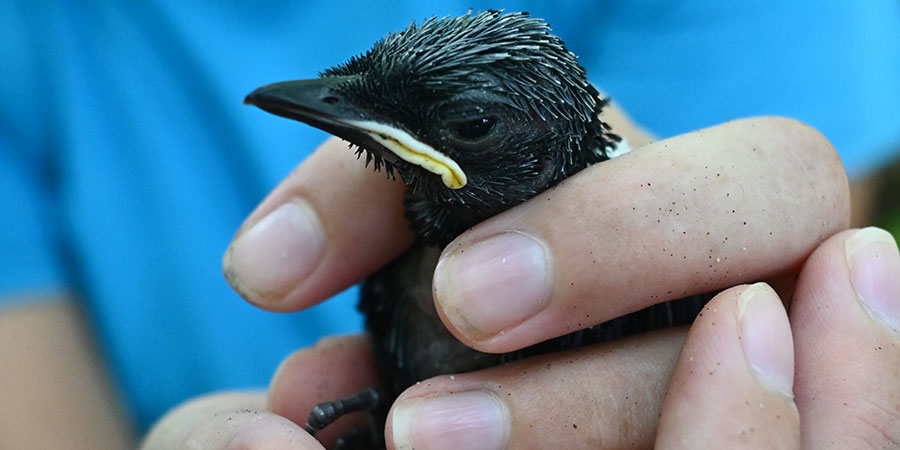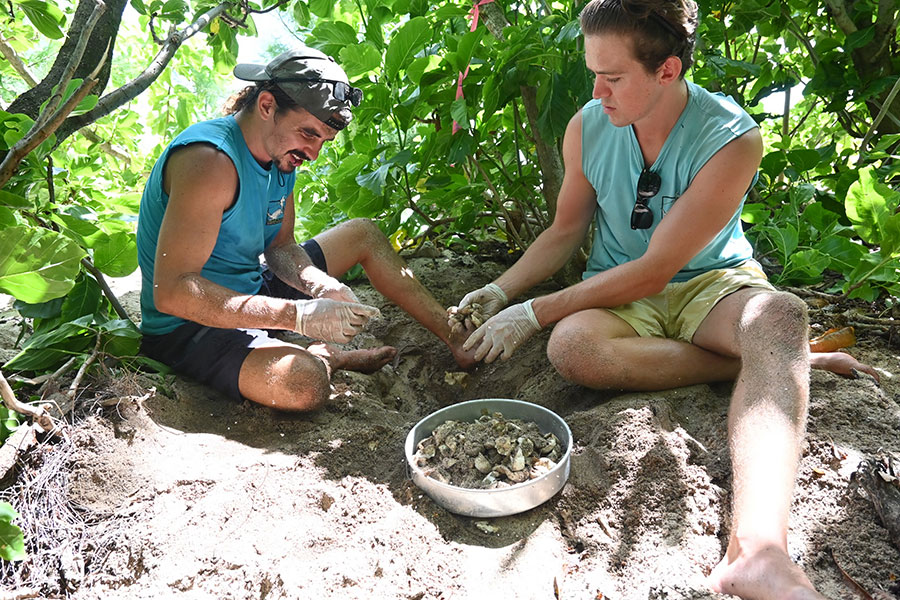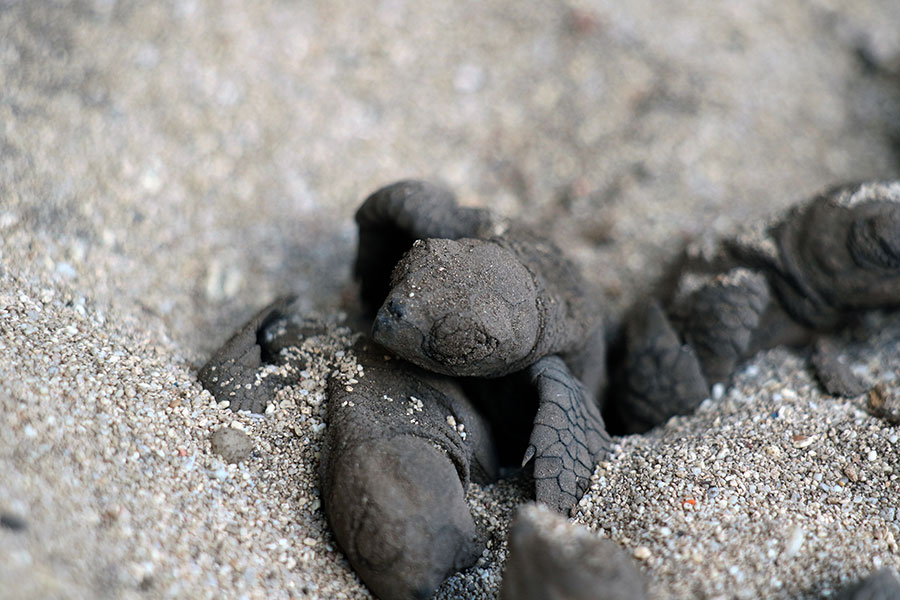
Andrew Chapman-New just finished a 10-week volunteer stint at Cousin Island Special Reserve. This is an account of his time there.
You can walk around Cousin Island in under an hour. In spite of this, its diverse habitats make it a haven for endemic wildlife; from its pristine beaches to its tropical forests to its granite plateau.
Cousin Island’s species flourish thanks to continued conservation efforts. Seychelles Magpie-robins are on the increase, White-tailed Tropicbirds and Wedge-tailed Shearwaters nest on the ground without fear of predators, White Terns and Lesser Noddys nest on branches in the open, Brown Noddys nest on granite rocks.
The island’s protection measures start even before guests arrive. Boats moor offshore, and guests are taxied to the island using Reserve boats to prevent the introduction of invasive species and pests. Public access is limited to two hours, five days a week, so biodiversity isn’t impacted.
My partner and I have recently completed 10 weeks of volunteering on Cousin Island with Nature Seychelles. We were there to help with island conservation.

Each day was different. At the beginning of the season, volunteers monitored nesting behaviour and mapped nest locations for Hawksbill and Green Turtles.
Once hatchlings emerged, we focused on that. We helped dig up nests to check hatching success, at what stage of development unsuccessful eggs failed, and the reasons why. This was a top moment for me as I got to see the unique first stages of hatchlings. Saying goodbye to the last hatchling of the season is something I’ll never forget.
We monitored Seychelles Magpie Robins’ territories, behaviour, and breeding patterns. We were lucky to observe a breeding pair raise a chick until it fledged. We helped the Science Officer ring the chick with its unique colour combination and number, and collect its biometric data and blood sample for its subsequent monitoring.
We tracked the three stages of seabirds’ chicks to monitor breeding success.
The spread of invasive species threatens island habitats and endemic species. We spent a lot of time removing invasive plants and creating new bird habitats. It was hot and sweaty, but seeing birds using the newly opened areas soon after we removed the invasives was weirdly therapeutic and rewarding.
Beach profiling was carried out monthly to map the coastline’s topography. In two months, we saw wide-sloping beaches narrowing with sheer sandbanks carved out by huge waves.

Climate change is a pressing concern. Erosion continues to threaten infrastructure. To mitigate the risk of collapsing buildings, relocation further inland is being considered.
A snorkelling trip around the island revealed sharks, barracudas, and turtles. Yet coral bleaching was evident, illustrating climate change challenges. Thankfully, the Reef Rescuers and the coral restoration project are bringing back healthy corals and beautiful colours.
Living on Cousin Island was an unforgettable experience I doubt I’ll ever have again. I will never forget Seychelles Fodys waking me up, and skinks using me as a climbing frame. I will also miss greeting the Aldabra Tortoises as they passed by the field centre and saying hello to our favourite chicks as we walked around.
We spent our free time reading books in hammocks, playing cards, snorkelling, or strolling through the forest. Life was simple.
Heat, humidity, mosquitoes and living with bare necessities were sometimes tough. Would I do it again? Absolutely. I’ve learned a lot from it.
Anyone who wants to be on the frontline of conservation should try volunteering on Cousin.

